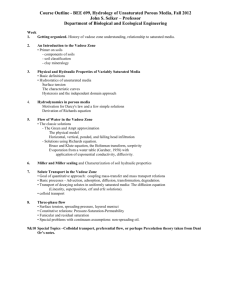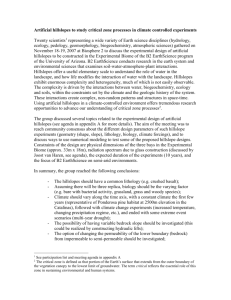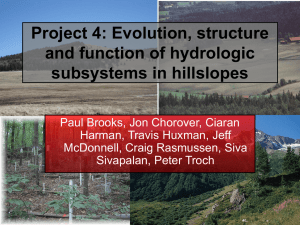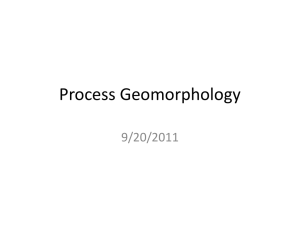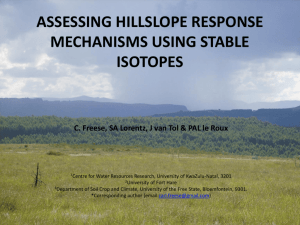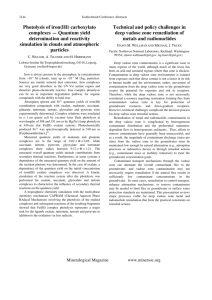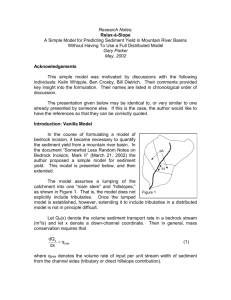A Subordinated Kinematic Wave Equation for Heterogeneous
advertisement
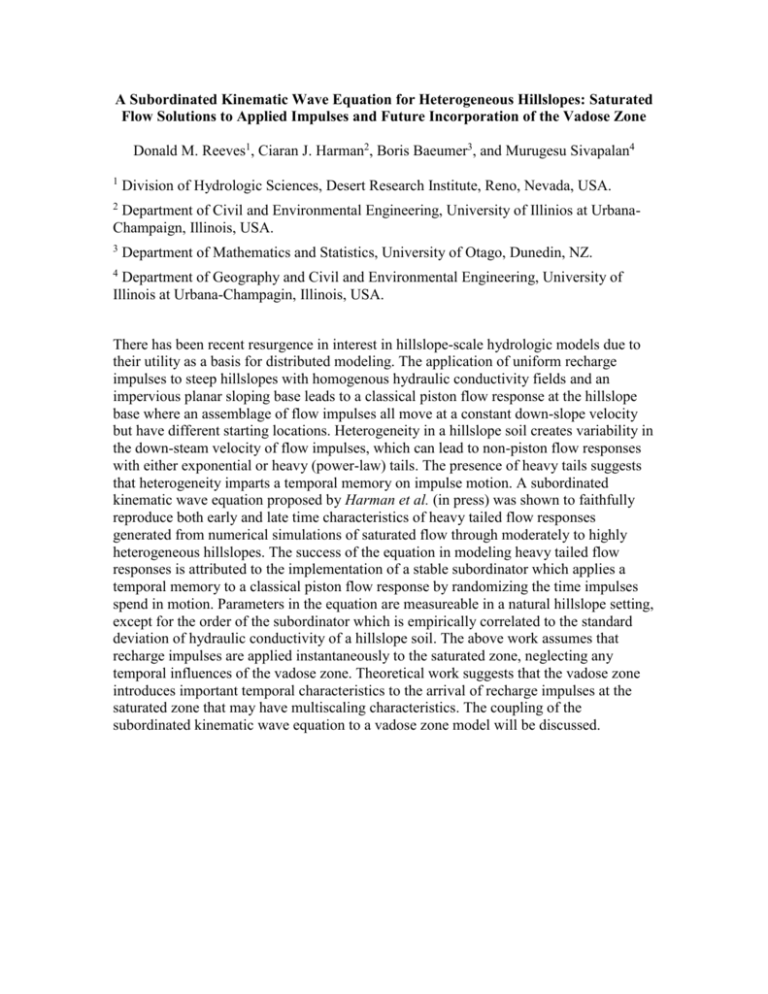
A Subordinated Kinematic Wave Equation for Heterogeneous Hillslopes: Saturated Flow Solutions to Applied Impulses and Future Incorporation of the Vadose Zone Donald M. Reeves1, Ciaran J. Harman2, Boris Baeumer3, and Murugesu Sivapalan4 1 Division of Hydrologic Sciences, Desert Research Institute, Reno, Nevada, USA. 2 Department of Civil and Environmental Engineering, University of Illinios at UrbanaChampaign, Illinois, USA. 3 Department of Mathematics and Statistics, University of Otago, Dunedin, NZ. 4 Department of Geography and Civil and Environmental Engineering, University of Illinois at Urbana-Champagin, Illinois, USA. There has been recent resurgence in interest in hillslope-scale hydrologic models due to their utility as a basis for distributed modeling. The application of uniform recharge impulses to steep hillslopes with homogenous hydraulic conductivity fields and an impervious planar sloping base leads to a classical piston flow response at the hillslope base where an assemblage of flow impulses all move at a constant down-slope velocity but have different starting locations. Heterogeneity in a hillslope soil creates variability in the down-steam velocity of flow impulses, which can lead to non-piston flow responses with either exponential or heavy (power-law) tails. The presence of heavy tails suggests that heterogeneity imparts a temporal memory on impulse motion. A subordinated kinematic wave equation proposed by Harman et al. (in press) was shown to faithfully reproduce both early and late time characteristics of heavy tailed flow responses generated from numerical simulations of saturated flow through moderately to highly heterogeneous hillslopes. The success of the equation in modeling heavy tailed flow responses is attributed to the implementation of a stable subordinator which applies a temporal memory to a classical piston flow response by randomizing the time impulses spend in motion. Parameters in the equation are measureable in a natural hillslope setting, except for the order of the subordinator which is empirically correlated to the standard deviation of hydraulic conductivity of a hillslope soil. The above work assumes that recharge impulses are applied instantaneously to the saturated zone, neglecting any temporal influences of the vadose zone. Theoretical work suggests that the vadose zone introduces important temporal characteristics to the arrival of recharge impulses at the saturated zone that may have multiscaling characteristics. The coupling of the subordinated kinematic wave equation to a vadose zone model will be discussed.
